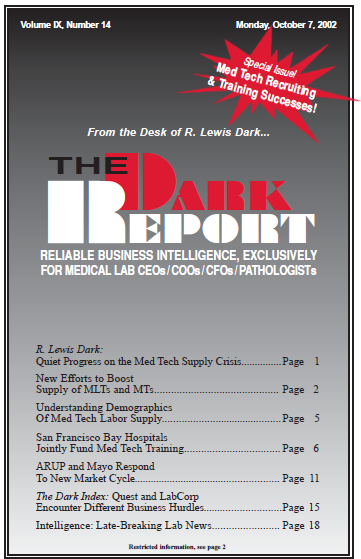CEO SUMMARY: Laboratory administrators in 15 Bay-area hospitals created their own plan to expand the available pool of trained med techs. Using a detailed analysis of the demographics of the problem, along with a financial analysis of non-action, they convinced CEOs of 15 hospitals to invest $1.5 million in a five-year training program. EDITOR’S NOTE: …
San Fran Bay Hospitals Jointly Fund MT Training Read More »
To access this post, you must purchase The Dark Report.


